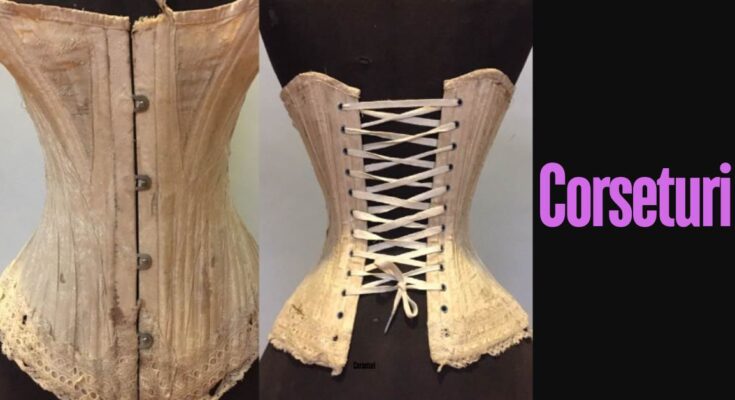Corseturi have been a staple of fashion for centuries, evoking images of elegance and allure. In the past, they were regarded as the pinnacle of femininity, captivating people’s attention with their ability to sculpt waistlines and enhance shapes. But corsets are more than just beautiful garments; they carry a rich history filled with cultural significance.
Whether you’re intrigued by vintage styles or modern adaptations, there’s much to explore in corsetry. From their origins in ancient civilizations to their resurgence in contemporary fashion, these garments offer aesthetic appeal and practical benefits.
Get ready to dive into everything you need to know about corsets—from types and sizing tips to common misconceptions—so you can make informed choices on your journey through this fascinating world!
The History of Corseturi
The history of corsets dates back to ancient civilizations. Around 2000 BC, the Minoans in Crete wore a bodice that accentuated their figures. Fast-forward to the Renaissance, and corsets became popular among European aristocrats.
Initially designed for support, these garments gradually became tools for shaping bodies. By the 16th century, they featured rigid materials like whalebone and were tightly laced to create an idealized silhouette.
Corsets reached peak popularity in the Victorian era. Women embraced intricate designs while adhering to societal standards of beauty. This period also saw debates about health concerns associated with tight-lacing.
As fashion shifted in the early 20th century, corsets fell out of favour but only partially disappeared. They adapted over time, transitioning from restrictive pieces to stylish undergarments embraced by modern designers today.
Types of Corseturi and Their Purposes
- Corsets come in various types, each designed for specific purposes. The classic underbust corset sits beneath the bust and allows freedom of movement while emphasizing an hourglass figure.
- Then there’s the overbust corset, which extends above the bust line. This style offers support and shaping to the waist and chest, making it popular for formal wear.
- Another type is the waist cincher. It’s shorter than traditional corsets but packs a punch when it comes to accentuating curves quickly.
- Some might opt for a training corset, which gradually reshapes the body through consistent wear. These are typically more rigid but provide significant results over time.
- There are fashion corsets meant primarily for aesthetics rather than severe waist reduction or support. They often feature elaborate designs and can be worn as standalone or layered with outfits.
Benefits of Wearing a Corset
- Wearing a corset can offer various benefits that extend beyond aesthetics. Many enthusiasts appreciate its structured support to the torso, promoting better posture. This stability helps reduce strain on the back and spine.
- Another advantage is the potential for waist training. Corsets can create an hourglass silhouette, enhancing body confidence and encouraging self-expression through fashion.
- Corsets also shape garments for special occasions or everyday wear. They smooth out lines under clothing, offering a polished appearance that enhances any outfit.
- Additionally, some users report feeling more aware of their movements while wearing one, leading to intentionality in posture and gracefulness.
- Many find comfort in the ritual of lacing up—a moment of self-care that allows for personal reflection amidst busy routines.
How to Properly Size and Wear a Corset?
Sizing a corset correctly is essential for comfort and effectiveness. Start by measuring your natural waist, usually just above your belly button. Use a soft measuring tape to get an accurate number.
When selecting a corset, consider the size chart provided by the manufacturer. Sizes vary significantly between brands, so don’t rely solely on your usual clothing size.
Once you have the right fit, it’s time to wear it. Loosen all laces before slipping into the corset. Begin tightening from the top down while standing or sitting comfortably.
Please pay attention to how it feels as you adjust. A well-fitted corset should provide support without pinching or causing discomfort.
It’s essential to break in your corset gradually over several wearings for optimal comfort and shape adjustment. This practice helps mould the fabric to your body while avoiding excessive pressure too soon.
Common Misconceptions about Corsets
Corsets often get a bad rap. Many people think they are just instruments of torture designed to squeeze the body into an unrealistic shape.
Although corsets were traditionally linked to severe waist training, contemporary styles put comfort and usefulness first.They can enhance your figure without feeling constrictive.
Another misconception is that corsets are only for special occasions or formal wear. In reality, everyday styles are suitable for casual outfits, too.
Some believe wearing a corset leads to health issues, but when properly fitted and worn in moderation, they pose minimal risk. It’s crucial to listen to your body and not overdo it.
Many assume corsets aren’t inclusive regarding body types. The market now offers various sizes and styles that cater to diverse figures, making them accessible for everyone seeking support or style in their wardrobe.
Tips for Choosing the Right Corset for Your Body Type
- Choosing the fitting corset is all about understanding your body type. Start by identifying your hourglass, pear, apple, or athletic shape. Each silhouette has its nuances that a well-fitted corset can enhance.
- Next, consider the material. Cotton is breathable and great for beginners, while satin offers elegance but may require more care. Remember to check for boning types; steel provides more support than plastic.
- Think about length, too. A longline style beautifully smooths curves for taller frames, whereas waist cinchers suit shorter torsos perfectly.
- Remember to accurately measure your bust, waist, and hips before shopping. This will help you find sizes that truly fit without compromising comfort or style.
- Try different styles, and don’t hesitate to experiment with colours and patterns! Corsets are as much about personal expression as they are about shaping the body.
Alternatives to Traditional Corsets
Several alternatives exist for those seeking shape without the traditional constraints. Shapewear has gained immense popularity. These garments provide smoothing and support while allowing for freedom of movement.
Bodysuits are another great option. They can sculpt the waist, hips, and bust seamlessly under outfits. Their versatility makes them a favourite for many occasions.
Waist trainers have also emerged as a modern choice. Designed to be worn during workouts, they focus on enhancing natural curves over time with consistent use.
If comfort is critical, consider soft-boned corsets or lace-up tops. They offer style without sacrificing ease in daily wear.
Fashion should enhance how you feel about yourself—explore these options to discover what best suits your body and lifestyle!
Latest post!
- “The Inspiring 5-Step Visionary Journey of Malia Manocherian: Unmatched Impact, Influence, and Innovation”
- “10 Powerful Ways to Elevate Your Tech Experience with XannyTech.net”
- The Importance of Regular Vehicle Maintenance and Choosing a Reliable Auto Repair Shop
- Journey through My Favorite Places: Stories, Adventures, and Hidden Gems
- Explore the Newznav.com Crypto Archives: Your Gateway to Crypto-currency Currency Insight
- MyDearQuotes.com Quotes Archives: All You Need to Know:-







